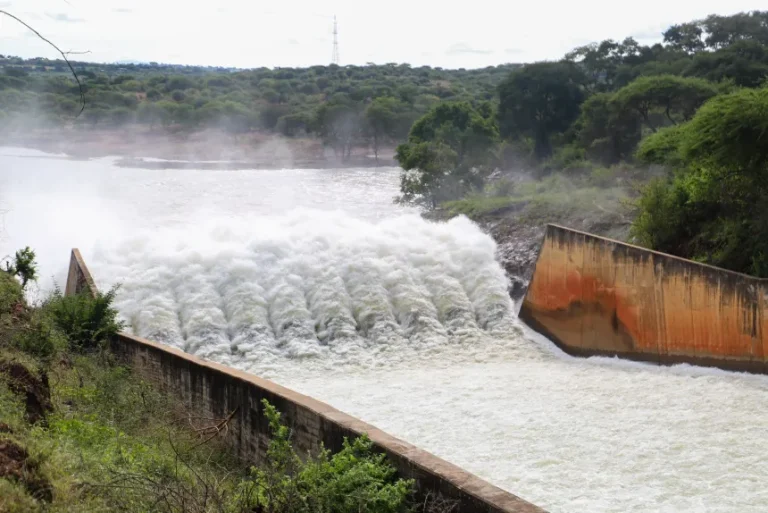Communities living downstream of the Seven Forks Dams Hydropower Cascade have been asked to move to higher ground.
This follows the spilling over of the dams as a result of continued rainfall in the Mt. Kenya and Aberdares catchment areas.
Residents living downstream and those within the proximity of the spillway zones, particularly those in Garissa and Tana River counties, are at greater risk.
The most vulnerable areas include Garissa, Hola, Garsen, and the broader Lower Tana River basin.
Principal Secretary, State Department for Internal Security and National Administration, Raymond Omollo warns that the Kiambere Dam, the last reservoir, has exceeded its full supply level and the potential of widespread flooding is both real and imminent.
“Under the prevailing circumstances, we hereby issue an immediate voluntary evacuation directive to all communities living downstream of the multipurpose reservoir. We urge these communities to move to higher ground without delay”, he appealed.
The government has activated a multi-agency team to undertake the emergency evacuation exercise.
“In coordination with KenGen, the National Disaster Operations Centre, and local Disaster Response Committees, we have activated full emergency communication and response protocols to manage the evacuation exercise with the urgency and seriousness it demands”, he said.
According to forecasts from the Kenya Meteorological Department, rainfall and showers are expected in the affected areas over the next four days until Tuesday, May 20, 2025.
“To this end, we urge all residents in the affected areas to heed this advisory and prioritise safety above all else”, he advised.
Further, the government is closely monitoring the inflow patterns and reservoir levels at Masinga, Kamburu, Gitaru, and Kindaruma Dams.
KenGen is also undertaking other precautionary measures, key among them controlled spillages, to safeguard the structural integrity of the reservoirs.
To avert potential loss of life, the PS announced the deployment of all available resources in coordination with local government administrators (NGAOs), who are actively securing temporary shelters in public schools, churches, and other designated government facilities.
Public health officials are also mobilizing humanitarian support mechanisms to provide immediate relief and safe refuge for affected families.
“First responders, led by the Kenya Red Cross Society and the Kenya Coast Guard Service (KCGS), remain on standby to carry out emergency rescue operations until the current threat has passed”, he said.
Margaret Kalekye


